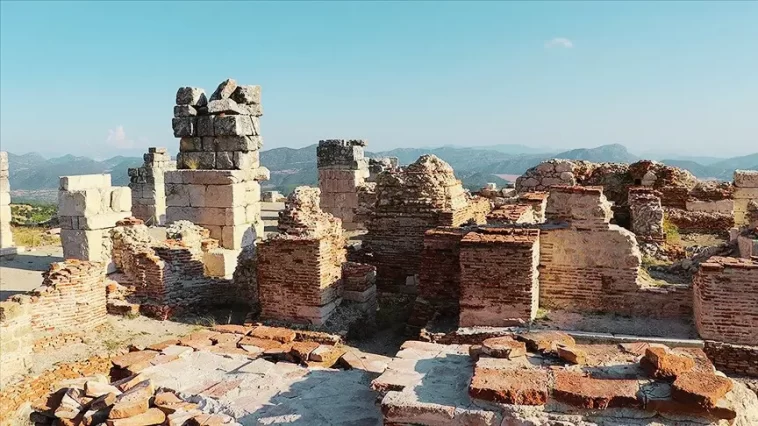Burdur, Turkey – Nestled in the mountains of southwestern Anatolia, the Sagalassos Ancient City has been gradually revealing its secrets for more than two decades. Recognized as one of the most remarkable Roman cities in Asia Minor, the ongoing archaeological projects are now celebrating their 20th year, offering a deeper look into the daily lives, culture, and architectural grandeur of the Roman Empire.
Supported since 2005 by Aygaz, the “Sagalassos Archaeological Research Project” has become a model of cultural heritage preservation. On the project’s 20th anniversary, Aygaz General Manager Melih Poyraz and his delegation visited the excavation site, touring restored areas such as the Agora Gymnasium, the Southeast Street, and the historic Fountain.
Rare Discoveries and Ancient Treasures
Recent excavations have uncovered extraordinary artifacts, including a sphinx figure representing the Egyptian god Tutu, along with two full-sized marble statues—one dedicated to the moon god Men and another to the messenger god Hermes. These findings highlight the city’s cultural diversity and its role as a significant Roman settlement.
Listed on UNESCO’s World Heritage Tentative List, Sagalassos is already famed for the Antonine Nymphaeum (Fountain) and the Upper Agora, one of the best-preserved Roman squares in the Mediterranean. Scholars emphasize that these features offer visitors a unique chance to walk through authentic Roman urban landscapes.
International Academic Collaboration
Since 2024, excavations have been carried out under a strong academic consortium that includes Koç University, Bilkent University, KU Leuven (Belgium), and Vrije Universiteit Brussel. This collaboration not only ensures financial backing but also contributes world-class expertise, knowledge, and research methodology.
Project leaders highlight that the partnership demonstrates how archaeology is not merely about uncovering stones but also about building cultural bridges between institutions, nations, and communities.

Insights from Experts
Prof. Peter Talloen, the excavation director, underlined that Sagalassos is among the best-preserved Roman cities in Turkey:
“A devastating earthquake in the 7th century left most of the structures buried under soil, almost like a giant puzzle waiting to be solved. Unlike many other ancient sites, Sagalassos was not looted or covered by modern settlements, giving us a rare chance to reconstruct history with remarkable accuracy.”
Future Plans and Restoration Works
The excavation program, scheduled to continue until 2029, is currently in its fourth phase. Plans include:
- Full restoration of the Agora Gymnasium
- Completion of the Southeast Street and Fountain reconstruction
- Anastylosis projects to re-erect collapsed architectural fragments
- Development of authentic visitor pathways using original 6th-century pavements
- Restoration of water flow to the historic Fountain, reviving its original function
These works aim to transform Sagalassos into one of the most immersive archaeological experiences in the Mediterranean, allowing visitors to step into the streets once walked by Roman citizens nearly 2,000 years ago.
Cultural and Corporate Support
Poyraz emphasized that Aygaz’s support is not limited to financial sponsorship but represents a long-term commitment to Turkey’s cultural heritage:
“For 65 years, Aygaz has been a leader in the energy sector, but we also see cultural, social, and scientific contributions as part of our corporate identity. Long-term projects like Sagalassos are proof of this vision.”
A Living Museum of Roman Civilization
Visitors today can explore the reconstructed Upper Agora, admire monumental fountains, and walk through colonnaded streets. With new restoration efforts underway, the site is gradually transforming into a living museum, where archaeology meets modern tourism.
Prof. Jeroen Poblome from KU Leuven and Prof. Inge Uytterhoeven from Koç University, who joined the anniversary celebrations, emphasized that Sagalassos serves not only as a research center but also as a hub for cultural tourism, education, and international cooperation.

